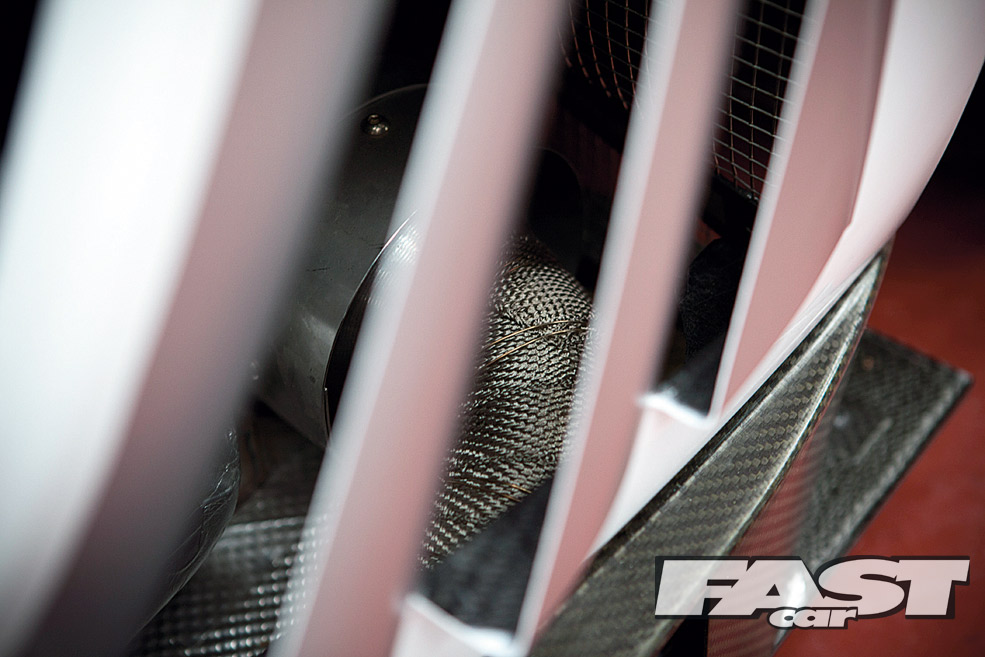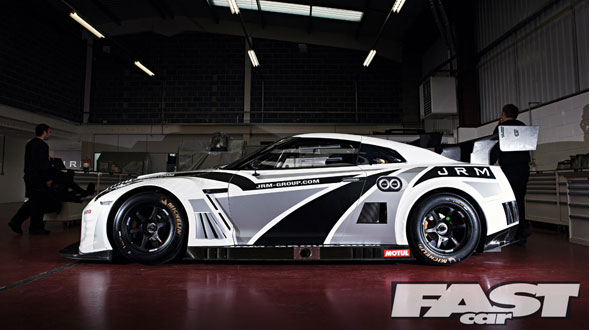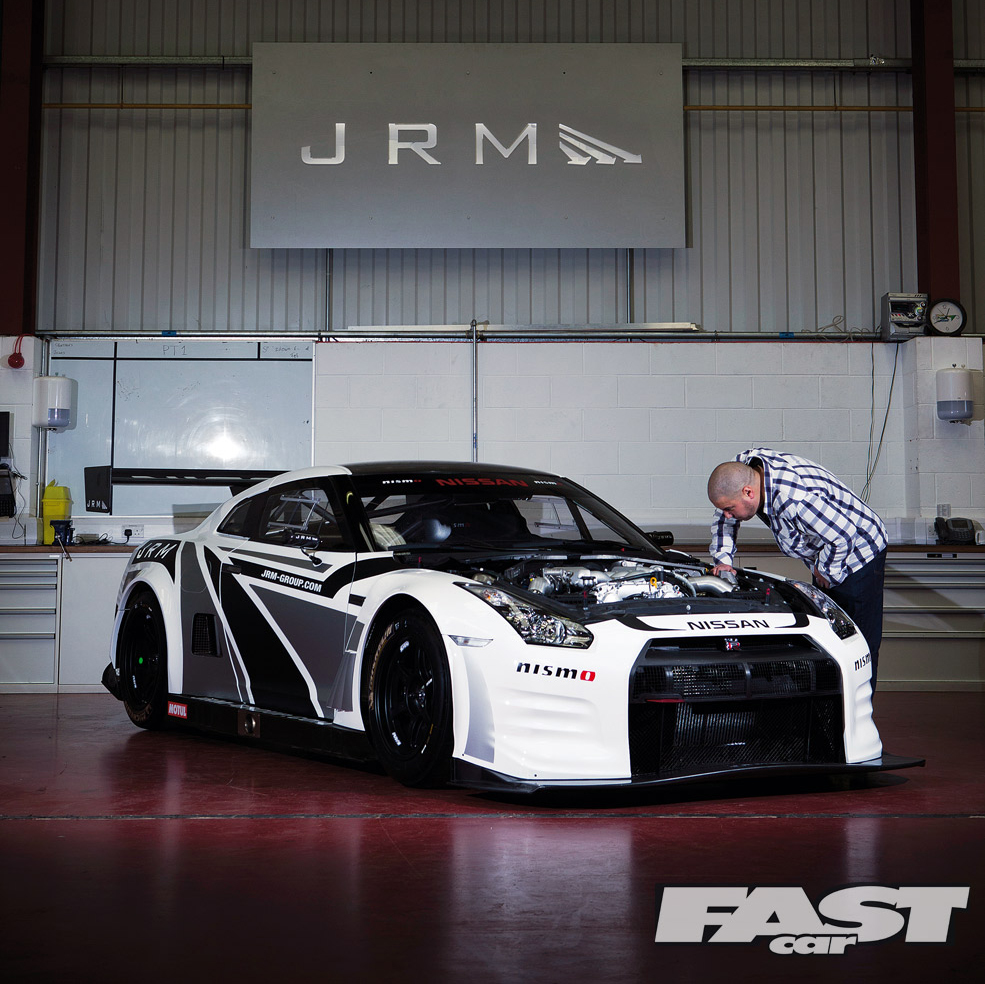When tuning your own car it’s a good plan to take influence from other top cars, but it’s a risky business as just because somebody else has done something doesn’t mean it’s necessarily the best way to do it. One way to be almost assured of choosing the best way is to take your tuning influence from a race car, as they have had insane amounts of development and testing; if they are doing it, you know it works.
The thing is though, a lot of race cars these days are so far from the road going version they’re just not relevant enough to take influence from, and we’re sure a lot of you turned the page and thought to yourself; “Why the hell is a carbon body race car in Fast Car?”. Well wonder no more, as unlike most world class race cars, the Nismo GT-R GT3 really is just a modified version of the Nissan GT-R production cars you see on the UK’s roads. The sceptics among you are probably still thinking; “Yeah right, I doubt there is any standard parts left on this beast”, but even we were amazed how closely related this thing is to a standard road car. There’s no carbon fibre space frame chassis here, the shell is straight off the production line at Nissan, and things like the chassis rails, sills, floor pan, suspension turrets, inner arches, screen pillars and bulkhead are totally standard; which in fact is more than we can say for a lot of modified road cars we know and love.

The ‘surprisingly standard’ theme continues under the bonnet, where the engine looks pretty standard, as to be fair, it is. The Nissan GT-R road car comes with a 3.8ltr twin turbo VR38 engine pushing out 545bhp, and this car comes with the very same engine, albeit with a quoted power of “500bhp+”.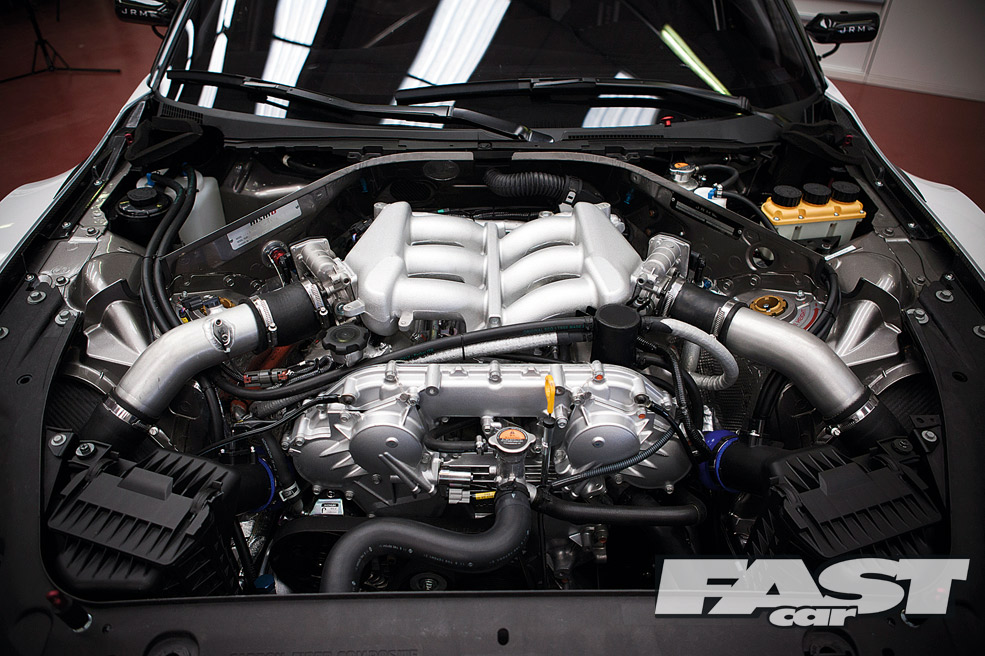
The reason for the vague power figure is because in GT3 racing they have what they call the ‘Balance Of Performance’. This basically means, in an attempt to keep the racing close, the organisers can at any time choose to restrict power on winning cars, and allow slower cars to up their power levels. The guys at JRM who build these cars for Nissan’s motorsport arm Nismo, fully admit they could easily make the car so much wilder in every aspect, but the ‘Balance Of Power’ rules means they can’t go too crazy, but the potential is there should they be allowed to.
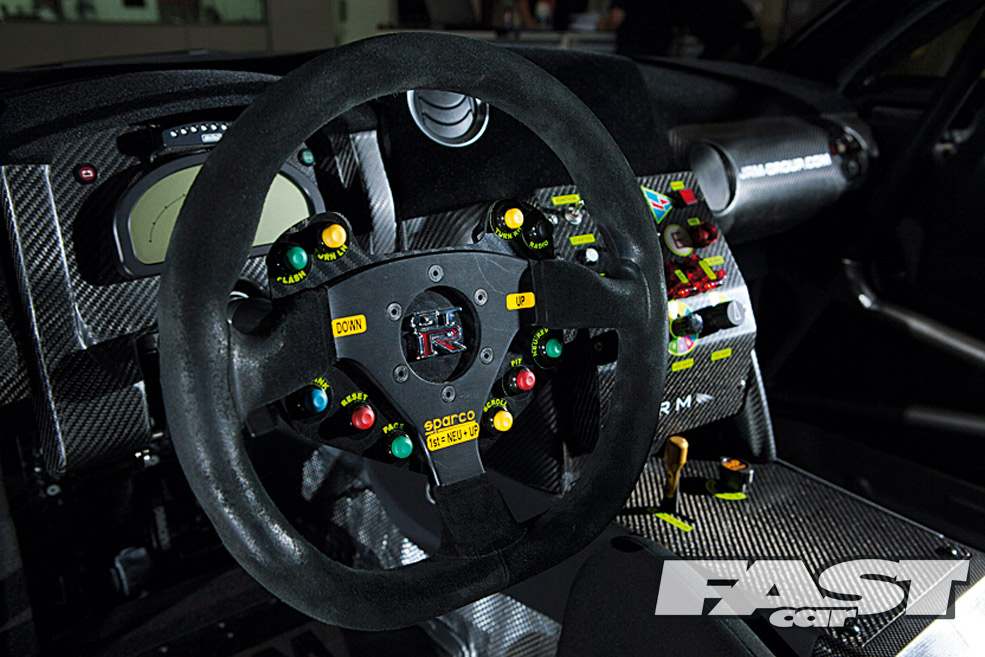
GT3 rules also mean while the engine and turbochargers have to be standard size, there’s no problem with monkeying about with the turbo internals, and while exact specs are secret, it’s safe to say they are pretty special inside, and more than capable of pushing out big power if the race organisers decide to allow it! Power is only one part of tuning though, reliability is another, which is why despite almost factory power levels, the engine runs two huge intercoolers, a big alloy rad, and a huge oil cooler too.
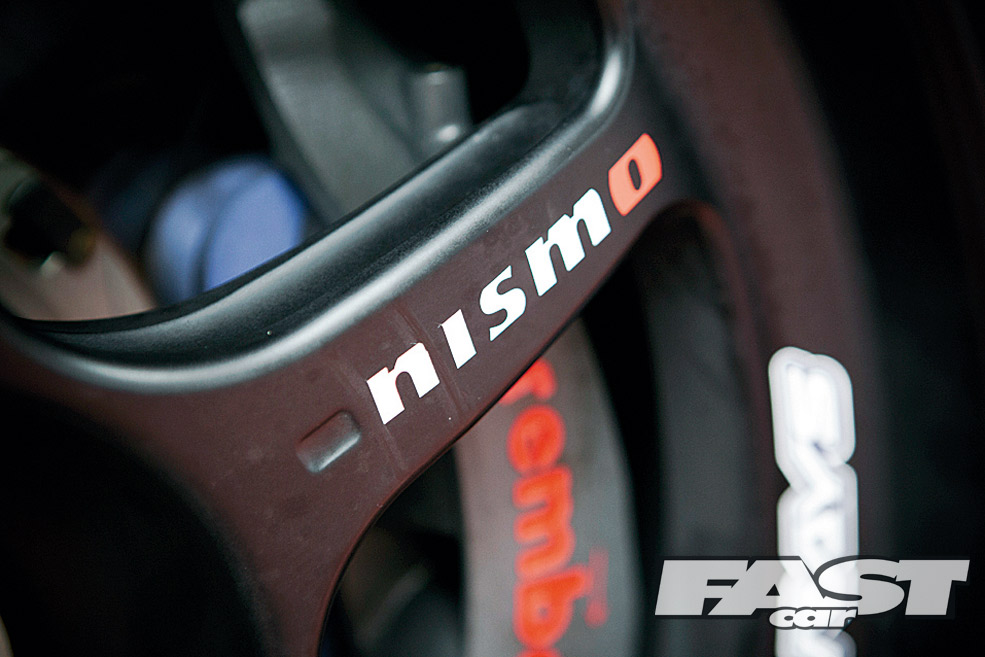
Another big difference compared to many tuned road cars is there is no show under the bonnet of this car either, it’s all go. No fancy hose connectors, no polished parts, just good old rubber pipes and Jubilee clips; things that JRM and Nismo know can withstand even a solid 24 hours of hard racing with no problems at all.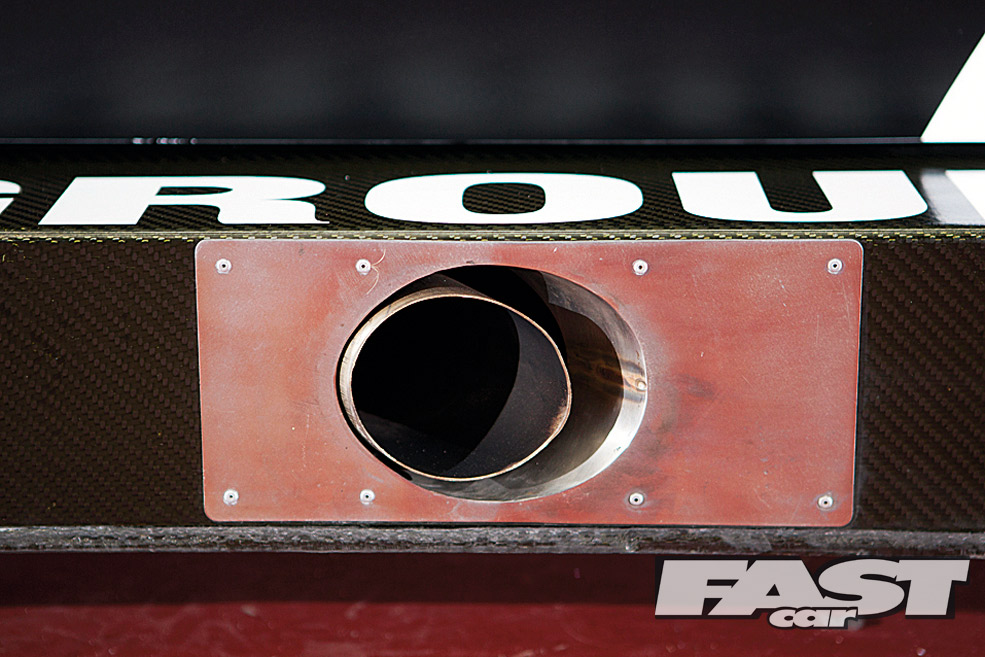
The final thing worth mentioning about the engine is the exhaust system, which in all honestly sounds flippin’ incredible. With heat-wrapped 2.5-inch exhausts from each turbo travelling along the inside of the side skirts and exiting under each door, the GT3 is not only pretty damn loud, but the rapid-fire pops and bangs on the over-run make a WRC car sound tame; it really is the best sounding GT-R we’ve ever heard. Some things on this car are far from standard, most notably the absolutely awesome looking bodywork. Before you start to wonder, no, the carbon Nismo wide body kit is not available for sale at any cost! “We get calls and emails on adaily basis asking to buy the kit” Mark from JRM laughs, “But it simply isn’t available; thankfully there is plenty of bodywork and tuning options available via our sister company, Sumo Power”.
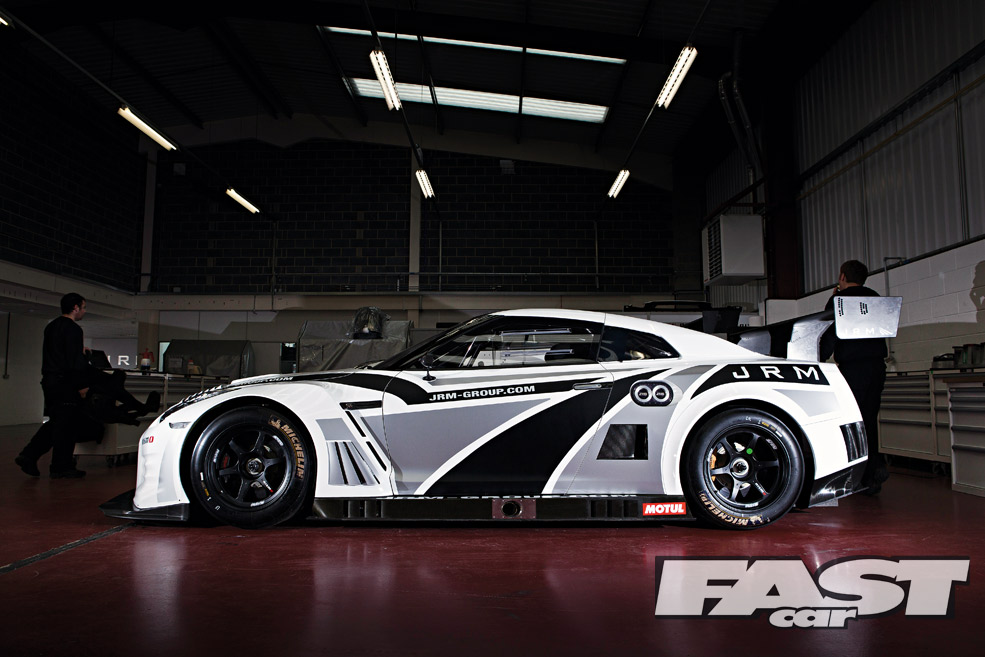
Every exterior body panel, including the roof and doors, are made of carbon fibre, and while they keep the original GT-R looks, they seriously pump up the styling thanks to the massive arches, aggressive bumpers, a vented bonnet, rear diffuser, huge front splitter, and one of the biggest rear wings we’ve ever seen. The amazing looks are why they get so many requests to buy it, but the real reason for the bodywork is pure performance. The lightweight bodywork helps this car weigh almost half a ton less than the standard GT-R, every vent and duct helps channel cold air to and away from all the vital components, and the front splitter, rear diffuser, and rear wing are just three of many parts that help push the car to the ground with enormous downforce, so much so that the rear wing is attached to the chassis; if it was attached to the boot lid like most cars it would simply crush the lid down at speed! And those wheel arches? Well they are to house a set of very serious wheels and tyres…
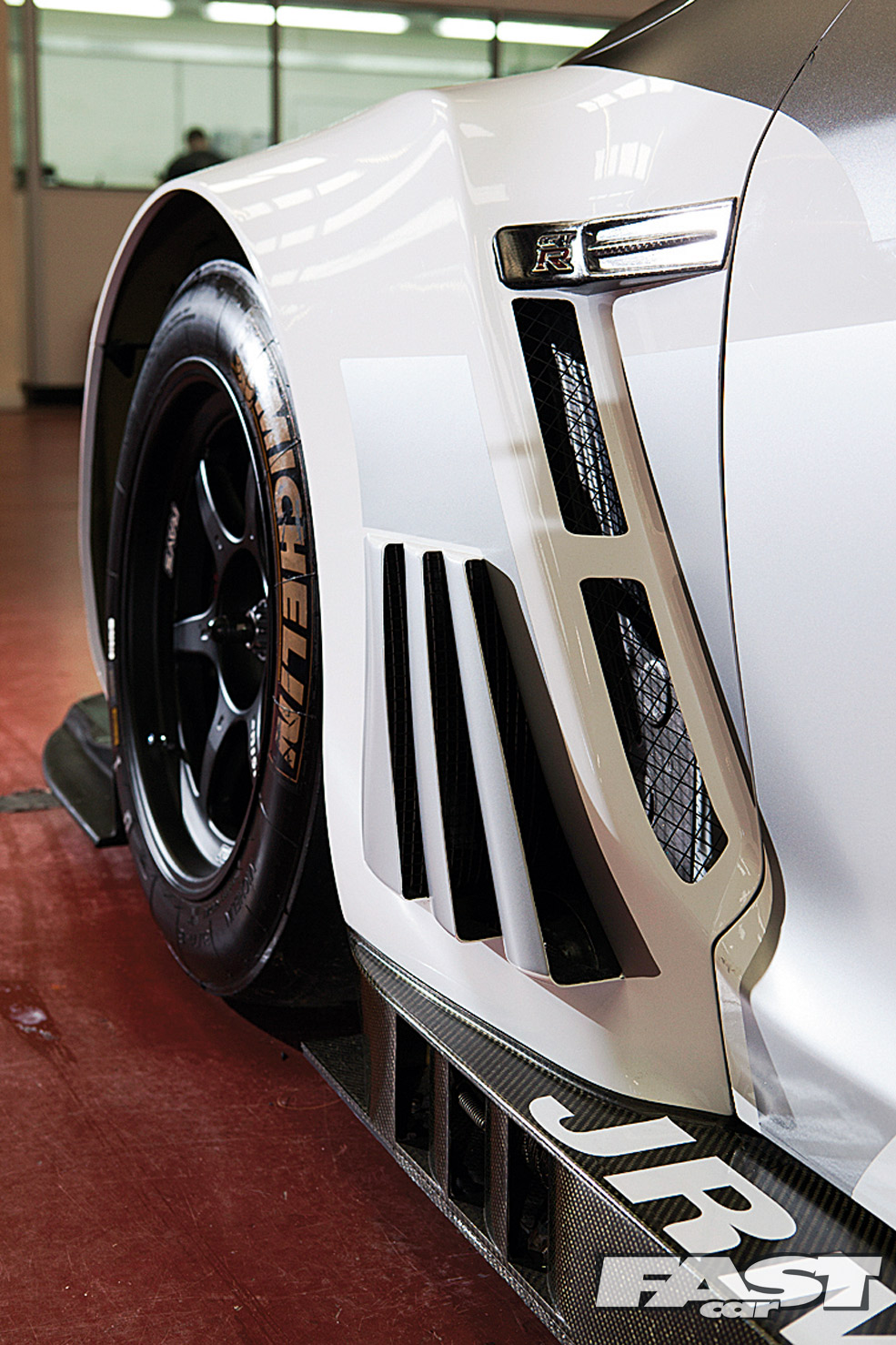
The GT-R road car wheels are massive, 20-inches in fact, but this is for looks reasons rather than performance, and because of this the GT3 car has more conventionally sized 18-inch rims. Smaller diameter they may be, but they are ridiculously wide; 13-inches wide front and rear! Proving the bigger isn’t always better when it comes to alloys, we think the 13×18-inch Volk Racing VR G2s the GT3 car runs looks far better than standard rims, and when it comes to grip, the lightweight Volks wrapped in 310mm wide racing slicks are on a whole different planet. Even removing these wheels are a piece of cake, thanks to a giant centre wheel nut replacing the usual fi ve studs, and no need to struggle getting a trolley jack under the low body kit either; simply plug an air line in to a fi tting on the back bumper and the car instantly jumps high off the ground on its ultra-trick air-jacks.

Behind the super-wide alloys are brake discs that are the same size as the standard GT-R items at a pretty huge 380mm, but the front calipers are Brembo racing units with the thickest brake pads we’ve ever seen. On the rear the calipers are actually totally standard; like we said earlier, if it’s good enough for a top race car, it sure don’t need changing on a road car!
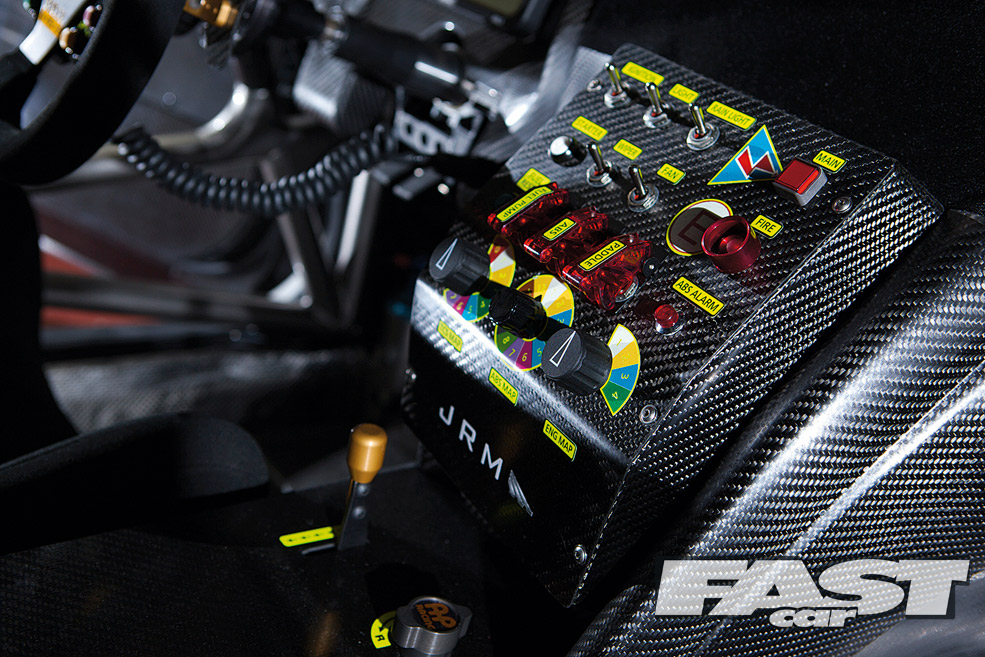
While this car has an amazing amount of similarities to the standard road car, one big change is it’s no longer four wheel drive; every last bit of power is channelled via a carbon propshaft and rear mounted sequential gearbox to those huge rear tyres.
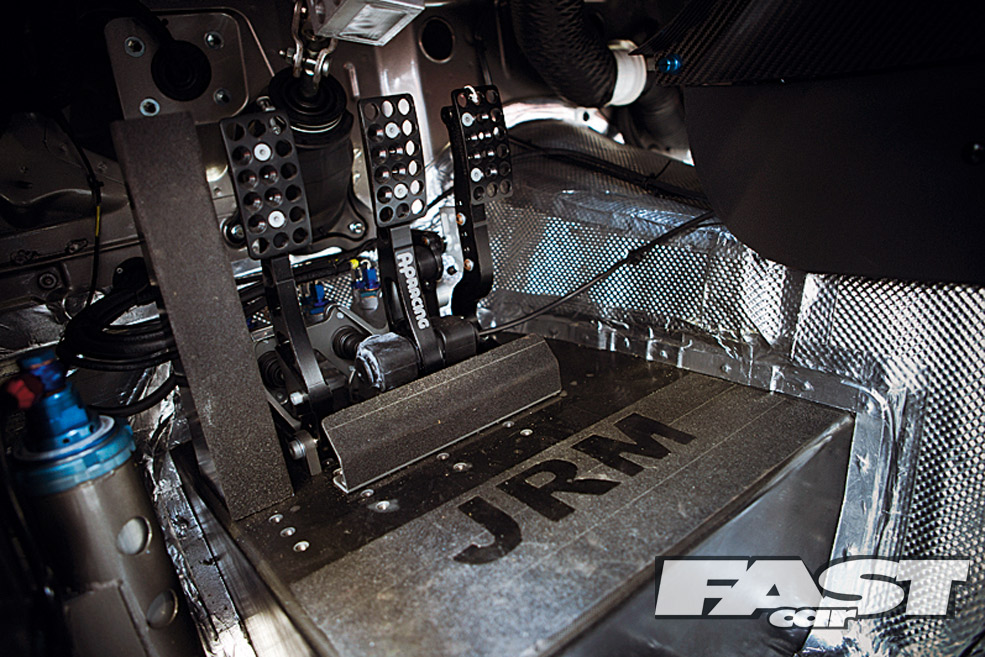
Despite the lack of four wheel drive, the GT3 can launch, corner, and brake far better than a standard GT-R, even in the slippiest of weather conditions. This is thanks not only to the aforementioned upgrades, but also two things a lot of people hate on tuned road cars; ABS and traction control. The reason for this is while standard ABS and traction control setups are intended to stop doddery old ladies crashing in the wet or accidentally doing rolling burnouts, this car has super fast reacting motorsport systems. These are fully in-car adjustable via dials on the dash, enabling the driver to adjust the amount of help he gets from them depending on track and weather conditions. This means he can drive as hard as possible without worrying about either the electronics interfering with his driving, or falling off the track when on the limit.
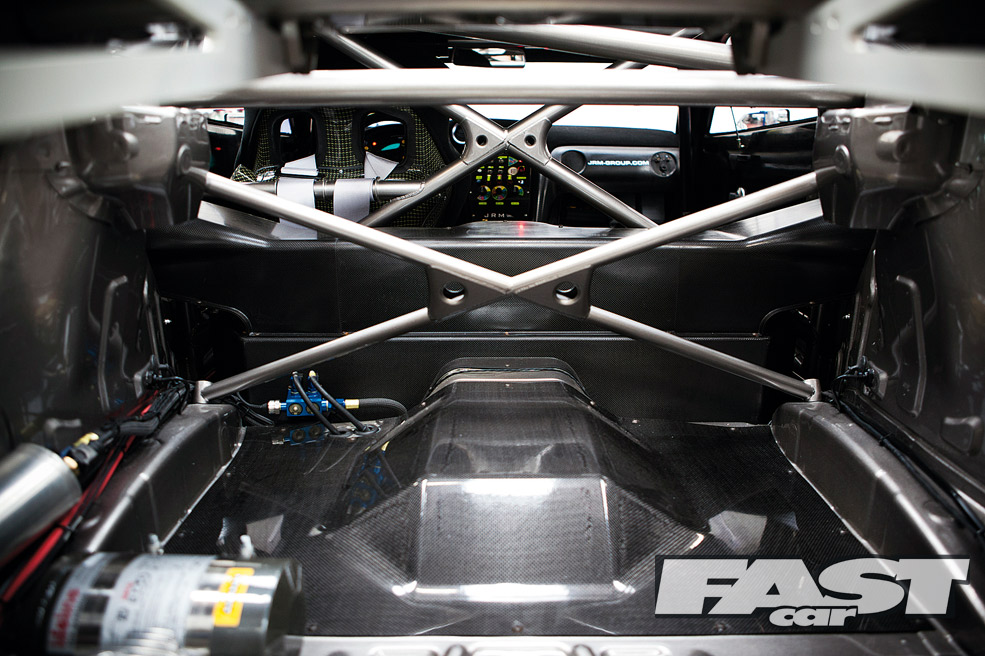
With similar power to the standard GT-R you might think the GT3 accelerates about as quickly too, but in fact it’s far faster. While the production GT-R weighs 1750kg, thanks to a serious diet this car weighs just 1300kg, that’s not much more than a Corsa VXR; and we’re sure you can imagine how fast a 550bhp Corsa would be! Another way of looking at it is the standard GT-R has about 314bhp per ton, but despite having no more power this beast has 423bhp per ton; more than even a Ferrari F50.
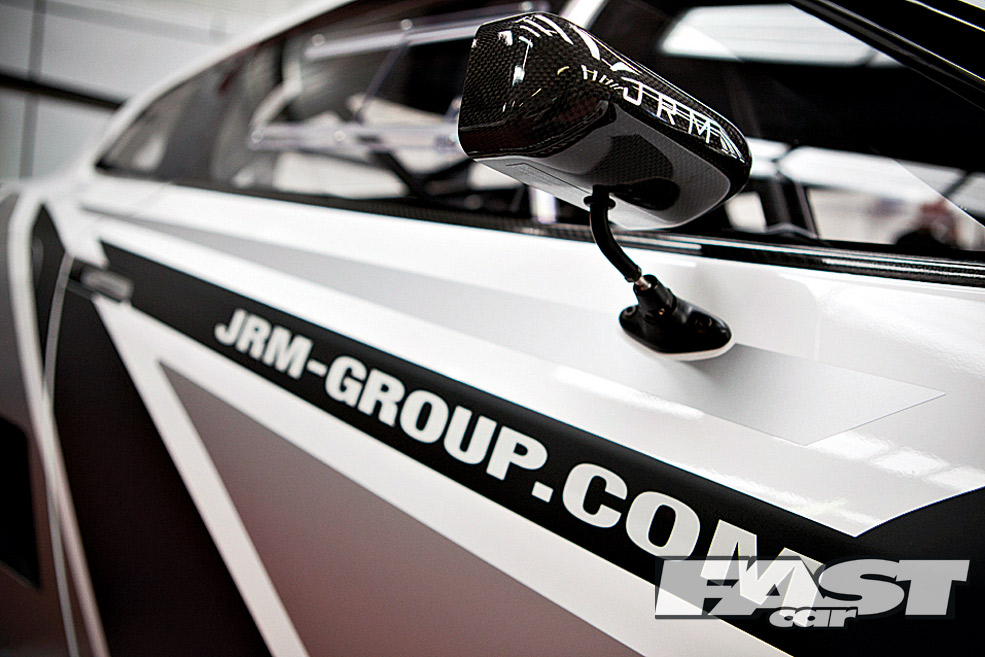
So, despite being unable to buy the body kit, having an engine that’s nearly standard, not being road legal, and costing around £375,000 to buy, this is still, without doubt, the coolest god damn Nissan GT-R on the planet, and the perfect one to take influence from when tuning your own car. Do we all want one? Hell yeah! Now, where’s that lottery ticket…
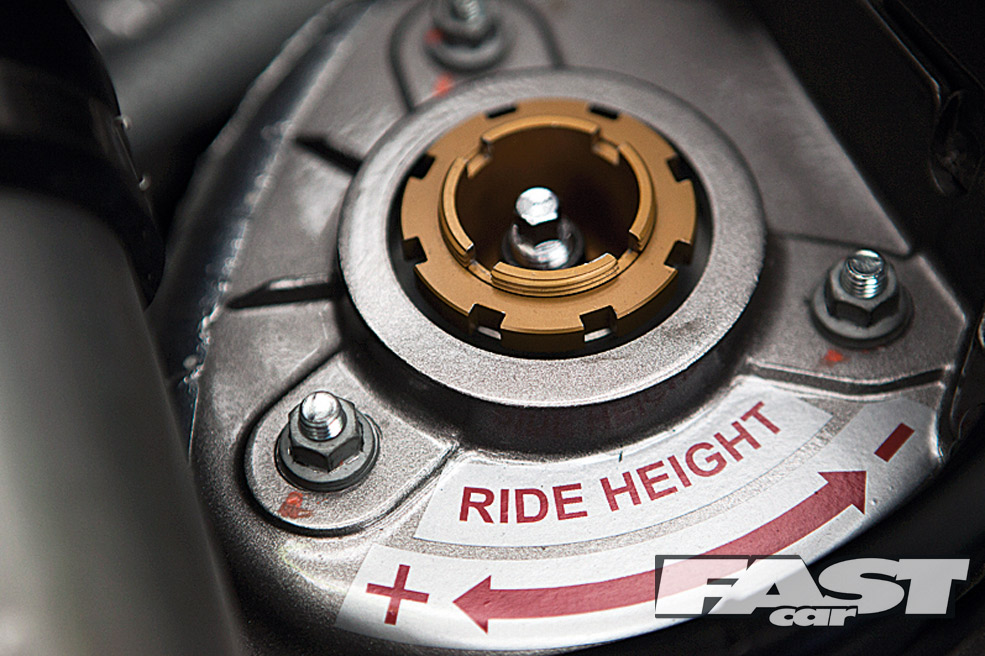
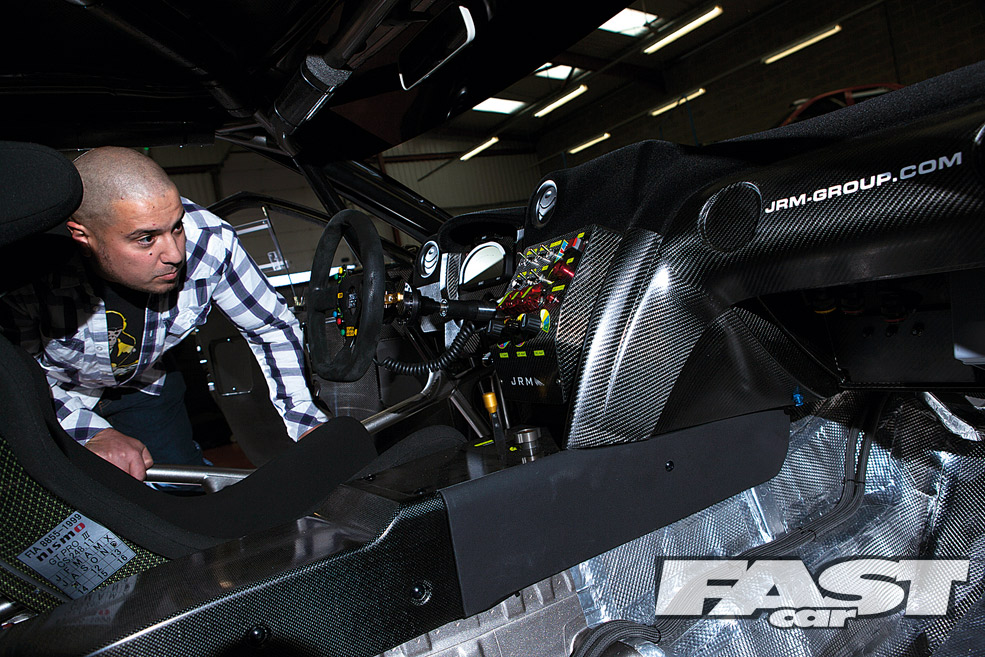
TECH SPEC NISSAN GT-R GT3
ENGINE
‘Production based’ Nissan GT-R VR38DETT 3799cc V6 engine with variable cam timing, twin standard size turbos with uprated internals, standard blue injectors, standard twin electronic throttles, twin 2.5-inch titanium side exit exhaust system with two straight through silencers per side, Samco turbo inlet hoses, high capacity twin front mount alloy intercoolers, top mounted oil cooler, PWR alloy radiator, single AFM conversion, Pectel SQ6M race engine management, ATL race fuel tank, solid engine mounts, lightweight race battery, oil breather system and catch tank, adjustable fuel pressure regulator, in-car adjustable ECU with four maps.
TRANSMISSION
Rear wheel drive conversion, Hewland six speed sequential transaxle dog engagement gearbox, semi-automatic steering wheel mounted paddle shifters, lightweight carbon fibre prop shaft, lightweight drive shafts, ultra-light flywheel, quad-plate Sachs racing clutch, rear mounted transmission oil cooler, in-car adjustable traction control with 7 position controller.
SUSPENSION
Ohlins TTX race coilovers, adjustable bladed front and rear anti-roll bars.
BRAKES
380mm racing brake discs front and rear, Brembo 6pot front race calipers, standard Nissan GT-R rear calipers, race brake pads front and rear, AP Racing in-car adjustable brake bias controller, Bosch Motorsport M4 in-car adjustable race ABS system with 12 position controller, carbon fibre brake ducts in front bumper and rear arches.
WHEELS+TYRES
13×18 Volk Racing VR G2 centre-lock wheels front and rear with 31/71×18 Michelin slick tyres.
EXTERIOR
Production Nissan GT-R steel chassis, complete carbon fibre bodywork, including doors, wide front and rear arches, front and rear bumpers, vented bonnet, roof, front splitter, and rear diffuser, carbon rare mirrors, Plastics4Performance polycarbonate lightweight windows, quick release bonnet and boot lid with aero catches, three way adjustable carbon fibre rear wing, rear wing supports bolted directly to chassis, race air jack system, carbon rear window strengthening bars, ATL twin race fuel fillers.
INTERIOR
Full FIA weld-in six point roll cage including door bars and roof reinforcement, Nismo GT Pro III carbon racing seat with cool air ducting system, flocked dash, Motec digital dash, height adjustable steering column, fully heat shielded floor pan, ducting from bonnet vents to standard interior air vents, carbon fibre trim panels, reverse lever and brake bias control on carbon centre console, dashboard mounted dials for ABS, Traction control, and ECU maps, AP Racing race pedal box, four point bolt-in rear bulkhead brace.
